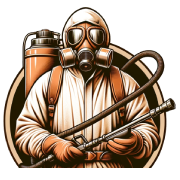What Are the Signs of Human Flea Infestations on Infested Items?
Recognizing signs of human flea infestations on infested items can help address the issue promptly. Look out for dark specks or flea dirt on bedding, furniture, or carpets, as these are feces left behind by fleas. Itching or skin irritation in humans and pets, along with tiny red bite marks, may indicate an infestation. Prompt action is crucial to eliminate the problem and prevent further spread.
Identifying the Signs of Flea Infestation in Clothing and Bedding
Dealing with flea infested clothing and bedding can be a daunting task, but before you can tackle the problem, it’s important to know what you’re dealing with. Fleas lay eggs on hosts, which then fall off onto bedding, carpets, and clothing. These eggs hatch into larvae, which then spin cocoons and transform into adult fleas. So, what are the telltale signs of flea infestation in clothing and bedding?- Flea eggs: Flea eggs are tiny and white, about the size of a grain of sand. They can be found in the fibers of your clothing and bedding.
- Flea larvae: Flea larvae are slightly larger than eggs and appear as small, white, worm-like creatures. They can also be found in the fibers of your clothing and bedding.
- Itchy red bites: When fleas bite, they leave behind itchy red bumps. If you notice that you’re experiencing more bites than usual, it could be a sign of a flea infestation.
- Visible fleas: In severe infestations, you may be able to spot adult fleas jumping around on your clothing or bedding.
- Dark specks: Fleas leave behind dark specks of waste, also known as “flea dirt.” This can often be found in the fibers of infested clothing and bedding.
Purging flea-infested clothing and bedding
Now that you have identified the signs of flea infestation in your clothing and bedding, it’s time to take action and purge them of these pesky pests. Cleaning flea-infested items requires a careful and thorough approach to ensure that all eggs and larvae are eliminated, preventing future infestations.Step-by-Step Guide to Cleaning Flea-Infested Clothing and Bedding
Follow these practical tips for effective flea removal:- Start by shaking out the clothing or bedding outside to remove any loose debris, eggs, or larvae.
- Place the infested items in a sealed plastic bag and immediately transport them to the washing machine.
- Wash the items using hot water and a heavy-duty laundry detergent. Hot water is essential for killing fleas at all life stages.
- After washing, dry the items in a high-heat dryer cycle. The heat will kill any remaining fleas, eggs, or larvae.
- Vacuum any carpets, rugs, or upholstered furniture in the vicinity of the infested items to remove any fleas or eggs that may have fallen off.
- Dispose of the vacuum bag or empty the canister outside to avoid re-infesting your living space.
- Repeat this process for any other clothing or bedding that may have been exposed to fleas.
Pest Removal Methods
If you prefer a more natural approach to pest removal, try using essential oils or a vinegar solution to eliminate the fleas. Simply mix a few drops of essential oils such as lavender, tea tree, or peppermint with water and spray onto the affected areas. Alternatively, mix equal parts of water and white vinegar and spray the solution onto the infested items. Leave for a few minutes before washing as usual.Laundry Best Practices for Flea Prevention
Here are some laundry best practices to prevent future flea infestations:- Wash your clothing and bedding regularly in hot water with heavy-duty laundry detergent.
- Ensure that your clothing and bedding are completely dry before storing them away in drawers or closets.
- Store your clothing and bedding in sealed plastic containers or bags to prevent future infestations.
- Vacuum your carpets, rugs, and upholstered furniture regularly to remove any flea eggs and larvae.
- Consider using flea repellents for pets to minimize the chances of flea infestations in your home.
